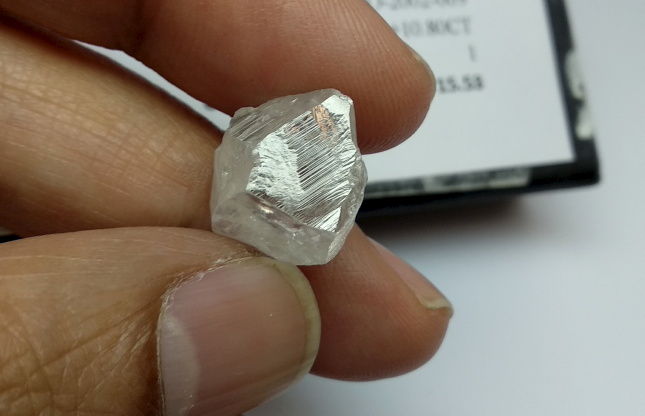The bonds between carbon atoms that make up a diamond are stronger in some planes than others; this means that diamonds are marginally harder at some angles than at others. Diamonds thus have certain planes of weakness along which they can fracture, split or break. Directional hardness is related to the toughness and durability of diamonds.
Diamond directional hardness refers to the varying hardness levels that diamonds exhibit along different crystallographic directions. While diamonds are known for being the hardest natural material, their hardness is not uniform in all directions due to their crystal structure.
Diamond’s Crystal Structure:
Diamonds have a cubic (isometric) crystal structure, where each carbon atom is tetrahedrally bonded to four other carbon atoms, forming a very strong three-dimensional network. However, the strength of these bonds varies depending on the direction in which they are tested.
Directional Hardness in Diamonds:
Hardness Along the Strongest Directions: Diamonds are hardest along the [111] axis, which is the direction along the diagonal of the crystal. This is where the carbon-carbon bonds are the most tightly packed, and the diamond’s crystal lattice is the most resistant to deformation. Along this direction, diamonds are extremely hard and maintain their hardness.
Hardness Along the Weaker Directions: The [100] axis and the [110] axis are considered to be weaker directions in terms of hardness. While diamonds are still very hard along these axes, they are not as resistant to wear and scratching as along the [111] axis. In these directions, the atomic bonding is not as tightly packed as in the strongest directions.
Practical Implications of Directional Hardness:
Cutting and Polishing: When diamonds are cut, the direction of the cut is chosen carefully to exploit the hardest directions of the crystal, ensuring the diamond retains its brilliance and shape. Cutting along weaker directions can make the diamond more prone to chipping or cracking.
Impact on Durability: While diamonds are incredibly durable overall, their directional hardness means that they can be more susceptible to damage if struck along certain axes, especially the [100] or [110] axes. Jewelers and diamond cutters take this into consideration when designing and setting diamonds.
Chipping and Cleavage: Diamonds can cleave or chip more easily along the weaker crystallographic directions, which is why it’s essential to handle diamonds with care during cutting and setting to avoid any damage along these axes.
Summary:
Diamonds are hardest along the [111] axis, and their hardness decreases along other axes such as [100] and [110].
Directional hardness plays a key role in diamond cutting, polishing, and setting, as the crystal’s strength varies depending on the orientation.
Understanding directional hardness is important for maximizing the durability and brilliance of diamonds, especially when they are subject to wear or impact.

